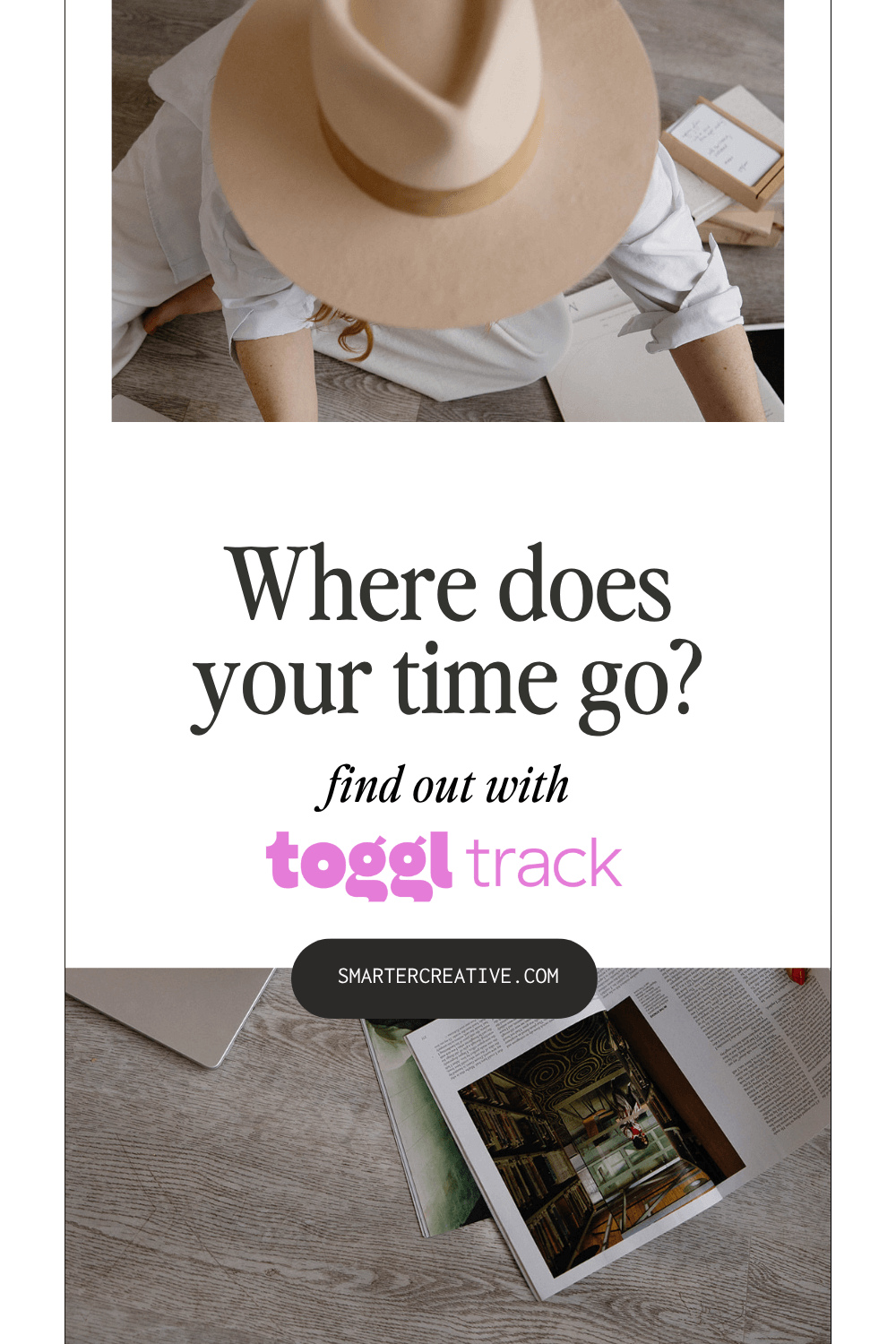
How Time Tracking Helped Me Beat “Time Blindness” as a Creative Business Owner
Oh hi friend 👋
Can we be real for a sec? For years, I had absolutely no clue where my time was going in my business. I’d sit down at my desk, dive into tasks, and suddenly the day was gone…but I couldn’t tell you what actually got done (or how long any of it took).
I call that time blindness—and it kept me stuck. My offers weren’t priced well, I said yes to too many clients, and I constantly felt behind.
The shift happened when I finally started tracking my time. At first, it was just because I had retainer clients with a set number of hours each month. But that one habit turned into something that completely changed how I run my business.
Here’s what I learned—and how time tracking (with my tool of choice, Toggl Track) gave me back clarity, stability, and even profitability.
The problem: time blindness is sneaky
If you’ve never tracked your time, you don’t realize how much you don’t know. Some tasks take way longer than you think. Others you swear eat half your day…turn out to only take 10 minutes.
When you don’t know where your hours go:
✔️ Pricing is a guess
✔️ Client capacity is a gamble
✔️ Delegating feels impossible
Once I started tracking, it was like turning on the lights. I could finally see how long things really took me, and suddenly I had data to make decisions.
Why I landed on Toggl Track
There are tons of time tracking tools out there, but Toggl Track just clicked for me. It’s simple, flexible, and integrates with the tools I already live in.
Here’s how I use it daily:
- Chrome extension → One click to start/stop tracking, no matter what tab I’m on
- Gmail → I can track time directly inside an email while I handle client requests
- Basecamp & Slack → When tasks or messages come in, I hit “start,” do the work, then stop tracking without leaving the app
- Mobile app → Great if you’re out running errands, shipping products, or away from your desk
For my brain, it’s easier to literally “clock in and out” of tasks instead of relying on an app that runs silently in the background. I need the visual cue of turning it on/off (and it’s second nature now).
Sunsama + Toggl = dream team
One of my favorite task managers is Sunsama, which helps me plan my day and estimate how long things will take.
When Sunsama added a direct integration with Toggl Track? Total game-changer. Now, when I start a task in Sunsama, it automatically kicks off time tracking in the right Toggl project. No double-tracking, no missed entries. Just clean data and peace of mind.
(If you’re new to Sunsama, I’ve got a whole video breaking down how I use it here.)
Taking it further with automation
You know I love a good automation 🪄
Here’s one of my favorites: when I book a new client in Dubsado, Zapier automatically creates their project in Toggl, adds their info to my contacts, and even preps my inbox. I don’t touch a thing—Zapier handles it.
I even have another zap that watches for Toggl alerts (like when a retainer client hits 75% of their hours) and preps a draft email for me to review and send. That way I can keep clients updated without constantly checking the numbers myself.
If you want to see my full onboarding zap, grab it here for free: Client Onboarding Zap.
👉 If you love automation, you’ll also enjoy my post on 5 automation hacks to streamline your client processes .
And if you’re juggling lots of files with clients, this post will help: Simplifying client file sharing with Dubsado + Google Drive .
Free vs paid Toggl: what’s worth it?
The free plan is amazing—and it even works for teams of up to five. I used it for years before upgrading.
What made me switch?
- Alerts when projects hit 50%, 75%, and 100% of hours
- More detailed reporting for client updates
- Recurring projects for monthly retainers
Honestly, the upgrade paid for itself the first month because I wasn’t over-servicing clients without realizing it.
Practical takeaway: try tracking this week
If you’ve been running your business with time blindness, here’s my gentle challenge:
This week, track everything you do for your business. Even just for five days.
- Use Toggl Track, a timer on your phone, or even pen and paper
- Write down start/stop times and what you were working on
- At the end of the week, add it up
I promise, you’ll be surprised. You’ll see tasks that eat more time than you thought, and others that are way faster than you assumed. That awareness alone will give you clarity on your pricing, your schedule, and even what you could delegate.
Time tracking didn’t just save me time. It gave me confidence in my pricing, boundaries with my clients, and permission to run my business sustainably.
If you’ve been in the fog of time blindness, maybe this is the nudge you need to turn on a timer and see what’s really going on.